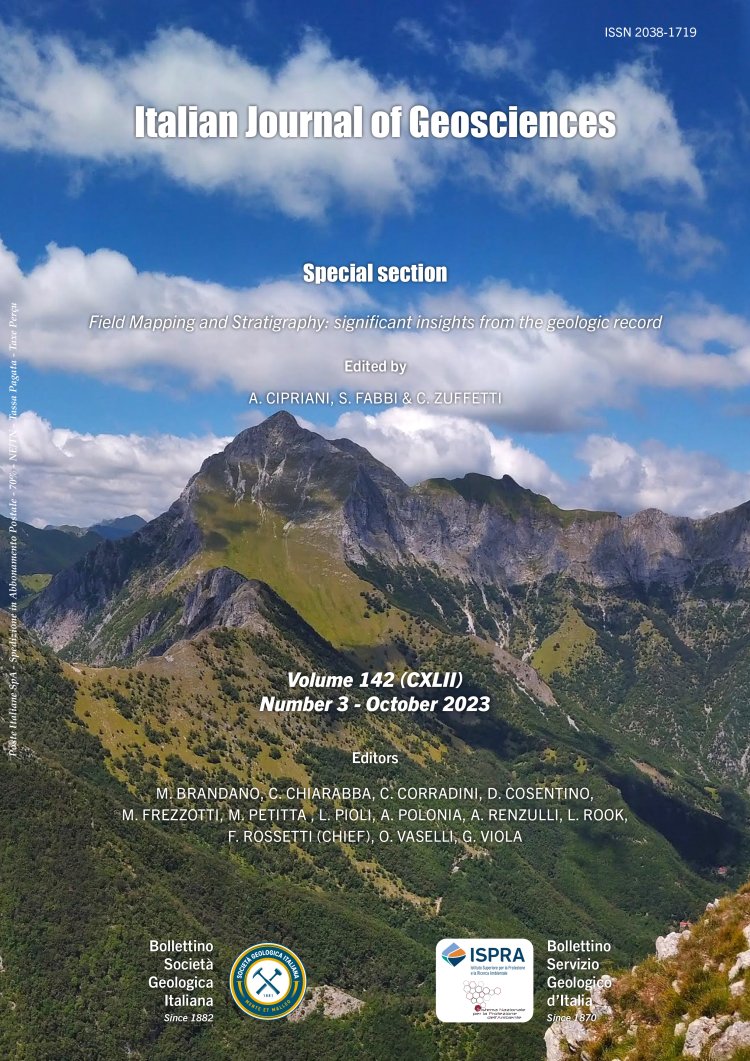
Geochemistry and 40Ar/39Ar ages of late Cenozoic basaltic rocks from Gharyan Volcanic Province, NW Libya
Abdelmoniem Masoud1, Abdelsalam Elshaafi2, Özgür Karaoğlu3, Alsedik Abousif1 & Michele Lustrino4,5
1Department of Earth Sciences, Faculty of Science, Sebha University, Libya.
2Department of Earth Sciences, Faculty of Science, Benghazi University, Libya.
3Eskişehir Osmangazi University, Department of Geological Engineering, 26040 Eskişehir, Turkey.
4Dipartimento di Scienzedella Terra, Sapienza Università di Roma, P.le A. Moro, 5, 00185 Roma, Italy.
5Istituto di Geologia Ambientalee Geoingegneria (CNR – IGAG) c/o Dipartimento di Scienzedella Terra, Sapienza Università di Roma, P.le A. Moro,
5, 00185 Roma, Italy.
Corresponding author e-mail: abdelsalam.elshaafi@uob.edu.ly
Volume: 142 (2023) f.3
Pages: 449-473
Abstract
The Cenozoic Gharyan volcanic province (GVP) represents one of the four major igneous districts of Libya, spreading over an area of ~4,500 km2. Despite the location of GVP close to major population centres in northwest Tripoli, the number of studies on the origin of this magmatism is relatively limited. Here, we discuss whole-rock geochemical data and present a new mineral chemistry and a 40Ar/39Ar geochronology study of the basaltic rocks of GVP. The mineralogical and geochemical differences of the two types of basalts identified in literature, defined
as “plateau” and “late” basalts cannot be related to fractional crystallisation of a common parent magma. The two groups of basaltic rocks are better interpreted as liquids generated from the same mantle source experiencing different degrees of partial melting, with the late-stage basalts representing lower degrees of melt extraction, without indication of crustal contamination. Trace element constraints support an origin from~2 to ~12% partial melting of a heterogeneous sub-lithospheric mantle close to the spinel-garnet transition at ~70-90 km depth.
Trace elements and Sr-Nd isotopic compositions of the Gharyan basaltic rocks overlap the other Cenozoic volcanic rocks of central Libya (e.g., Al Haruj volcanic province) and southern Italy (e.g., Etna and Pantelleria), lacking the presence of the enriched mantle component identified in other North African Cenozoic basaltic provinces. The new high precision 40Ar/39Ar age determinations indicate roughly simultaneous eruption ages of the two basaltic lava series, mostly in the 5.4-3.8 Ma range, with plateau basalts being statistically slightly older than the late stage, but with a large overlap. The dating of a dyke to ~28 Ma indicates the presence of an older Oligocene volcanic phase, whose products have been almost entirely eroded. The youngest age reported in this study indicates that volcanic activity continued until latest Pliocene (2.67 Ma). The overlap of 40Ar/39Ar ages between “plateau” and
“late” basalts indicates that the existence of two distinct volcanic phases should be reconsidered.
Keywords
Get Full Text Supplementary Material